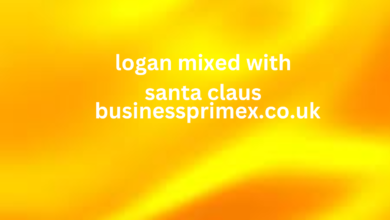Exploring The Cure The Walk Keyboard Sound The Art Behind the Music

The Cure’s “The Walk” is one of the band’s most iconic tracks, standing out for its catchy melody, rhythmic drive, and unforgettable keyboard sound. Released as a part of Japanese Whispers in 1983, the song has maintained its place in music history, largely due to the unique keyboard elements that define it. In this article, we’ll explore The Cure The Walk Keyboard Sound, examining its creation, its significance, and its lasting influence on music.
The Birth of “The Walk”
Before diving into the specifics of The Cure The Walk Keyboard, it’s important to understand the era and context in which it was created. The early 1980s marked a significant shift in the music world, with the growing prominence of synthesizers and electronic instruments. The Cure, always at the forefront of musical innovation, embraced these technologies with an eagerness that would come to define their sound during this period.
The Walk was one of the first songs to showcase a more electronic direction for The Cure, experimenting with synthesizers and other effects to create a layered, atmospheric sound. This track was a departure from some of the band’s earlier work and would set the stage for future hits that would merge post-punk with new wave and electronic music.
The Key Role of Synthesizers in “The Walk”
The The Cure The Walk Keyboard is most notably shape by the synthesizers used in the track. The band used a combination of analog and digital instruments, with one of the primary keyboards being the Roland Jupiter-8. Known for its rich, warm tones, the Jupiter-8 was used to create the lush, layer textures that are a hallmark of the song.
The Jupiter-8’s ability to create both deep bass sounds and shimmering high-pitched tones allowed the keyboard parts to have a broad range, both socially and emotionally. Its full, resonant sound played a pivotal role in shaping the atmosphere of the track, from the opening notes to the final fade-out.
Layers of Sound: The Art of Keyboard Textures
One of the standout features of The Cure The Walk Keyboard is its complex layering. The song is built on multiple keyboard layers that work in harmony to create a dense, immersive sonic environment. These layers not only add depth to the song but also create a sense of space that envelops the listener.
The keyboard part in The Walk is constantly evolving. At times, the sound is soft and ethereal, with shimmering effects that almost feel like they’re floating through the track. At other moments, the keyboard grows more intense, with heavier bass tones and sharper, more defined melodies that drive the song forward.
The careful placement of each sound and the seamless transitions between them are a testament to the band’s mastery of their instruments. By layering different synthesizer sounds and effects, The Cure was able to create a track that felt both dense and expansive, all while maintaining its rhythmic energy.
The Use of Effects: Reverb and Delay
In addition to the synthesizers, the use of effects played a significant role in crafting The Cure The Walk Keyboard Sound. Reverb and delay were key elements that helped to shape the track’s ethereal and spacious quality. The use of reverb on the keyboard parts allowed them to feel distant and atmospheric, contributing to the dreamy mood of the song.
Meanwhile, delay effects added a sense of movement and echo to the sound, making the keyboard parts feel as though they were bouncing off the walls of a large, cavernous space. This use of effects not only enhanced the sound but also helped to create the song’s unique emotional impact.
The Keyboard as a Driving Force
In many songs, the keyboard serves as an accompaniment to the melody or rhythm. However, in The Walk, the keyboard takes on a more central role. The keyboard parts drive the song forward, providing both harmonic and melodic content. The rhythm section—bass and drums—provides the foundation, but it’s the keyboard that creates the track’s signature sound.
From the opening chords to the infectious, memorable melody, the keyboard is at the heart of The Walk. The use of syncopated rhythms in the keyboard parts adds a layer of complexity that keeps the song engaging and fresh. This rhythmic quality is also present in the song’s structure, where the keyboard continually shifts between atmospheric sections and more energetic, melodic passages.
The Emotional Impact of the Keyboard Sound
What sets The Cure The Walk Keyboard apart from other tracks is its ability to convey emotion through its use of sound. The lush, shimmering synths evoke a sense of longing and nostalgia, while the more driving, upbeat sections of the track feel both energetic and uplifting. This emotional range is a direct result of the band’s ability to use the keyboard not only as a musical instrument but also as a tool for storytelling.
The song’s keyboard lines are both melodic and harmonic, weaving together to create a feeling of yearning. It’s a sound that feels simultaneously distant and intimate, capturing the feeling of being lost in a dream. This balance of textures and emotions is what makes The Cure The Walk so timeless and universally relatable.
The Influence of The Walk on Modern Music
The legacy of The Cure The Walk Keyboard Sound extends far beyond the track itself. Its influence can be heard in many modern artists and genres, particularly in electronic and indie music. The lush, atmospheric sound that was pioneer in The Walk help to shape the sound of the 1980s new wave movement and inspired countless musicians who came after.
The track’s ability to blend electronic elements with organic, emotional soundscapes became a hallmark of the era. Artists such as Depeche Mode, New Order, and many others cited The Cure as a major influence, and The Walk remains a key example of the band’s innovative approach to synthesizers and sound design.
The Art of Innovation: The Cure’s Creative Process
The Cure’s approach to creating The Walk reflects their broader philosophy of musical experimentation. While many bands at the time were focusing on traditional rock instrumentation, The Cure embraced the emerging world of synthesizers and electronic music. By combining new technologies with their post-punk sensibilities, the band was able to create a sound that was fresh, innovative, and ahead of its time.
Roger O’Donnell’s work on the keyboard was instrumental in shaping the track’s sound. His ability to layer different sounds, combine effects, and play with rhythm allowed him to create a keyboard part that was both intricate and accessible. This balance between complexity and simplicity is part of what makes The Cure The Walk Keyboard so captivating.
The Timeless Quality of The Walk
One of the most remarkable things about The Cure The Walk Keyboard is its timeless quality. Despite being release over three decades ago, the song still feels fresh and relevant. The innovative use of synthesizers, effects, and keyboard techniques has influenced generations of musicians and continues to resonate with new listeners.
The emotional impact of the song, driven in large part by the keyboard sound, ensures its place in the annals of music history. It’s a song that continues to be celebrate for its ability to combine technical innovation with emotional depth.
Conclusion
The Cure’s The Walk stands as a testament to the power of innovation and creativity in music. The Cure The Walk Keyboard Sound is one of the most distinctive and influential keyboard sounds in popular music, combining lush synthesizers, intricate layering, and atmospheric effects to create a track that is both sonically rich and emotionally compelling. Its impact on the music world is still felt today, and it remains a key part of The Cure’s enduring legacy.
By embracing new technology and constantly pushing the boundaries of sound, The Cure was able to craft a track that is both innovative and timeless. Whether you’re a fan of The Cure or simply a lover of great music, the The Cure The Walk Keyboard is something that continues to inspire and captivate.
Revolutionary Advances in Adonis Plastic Surgery: What You Need to Know





